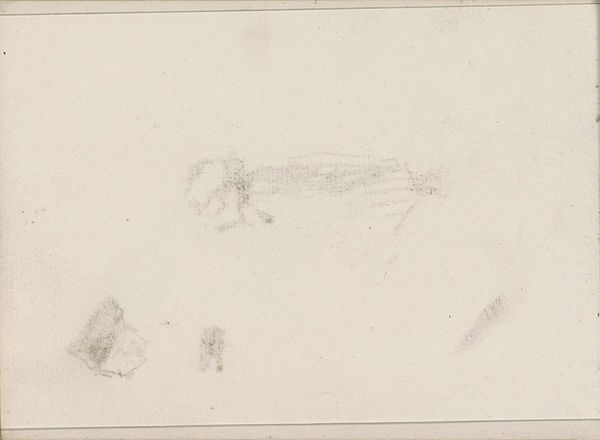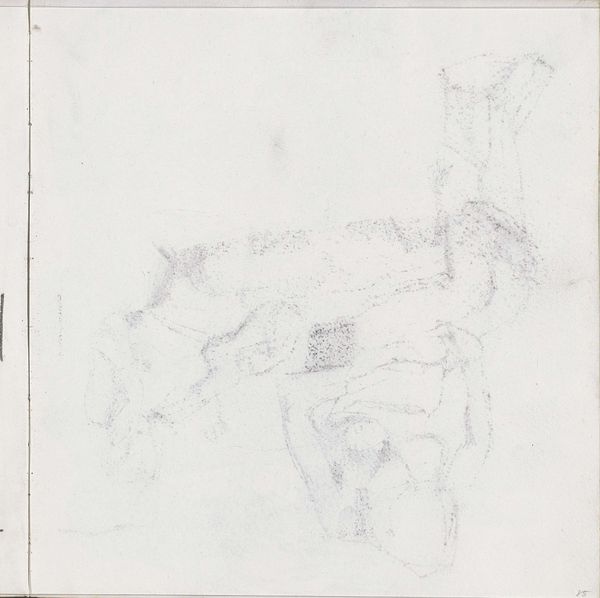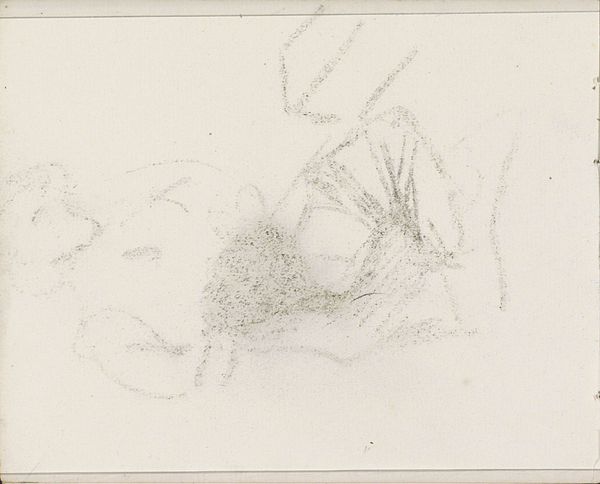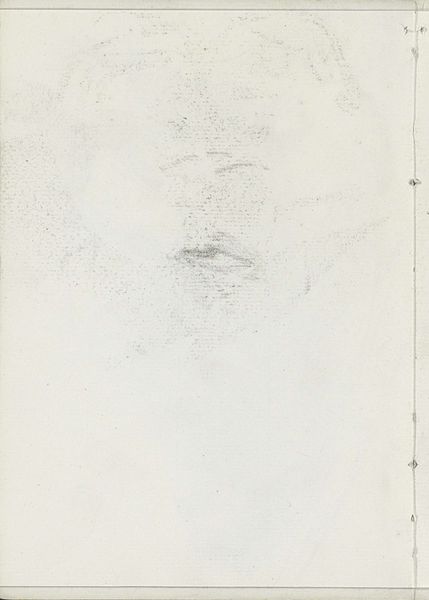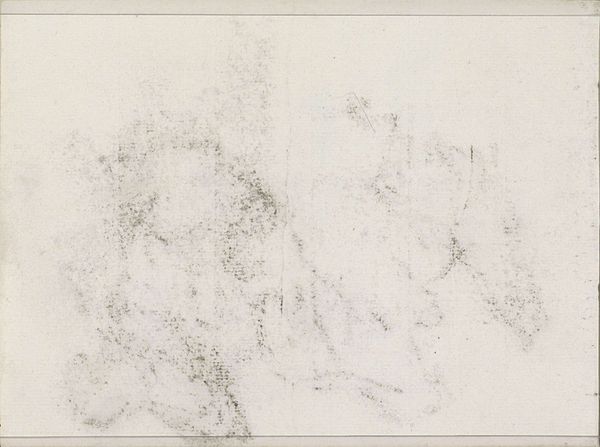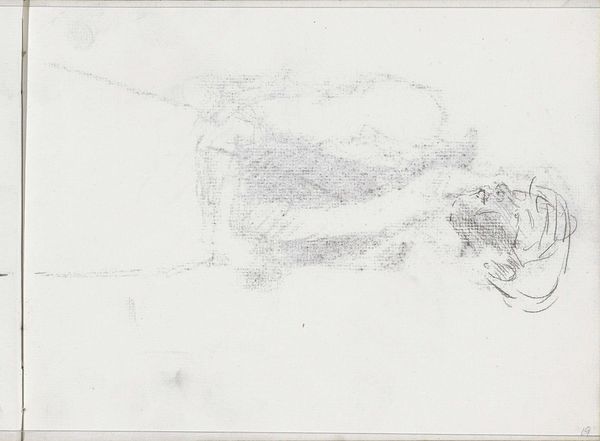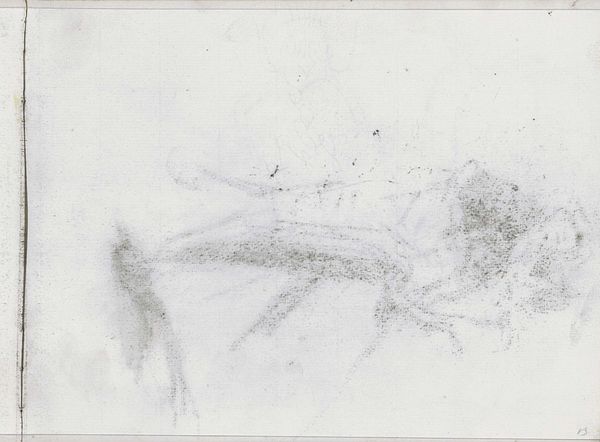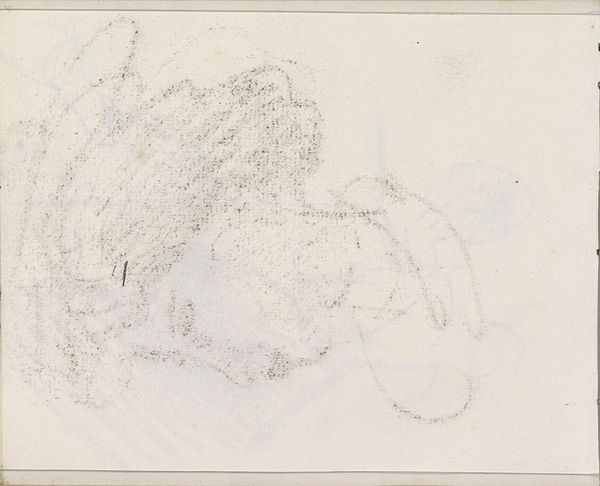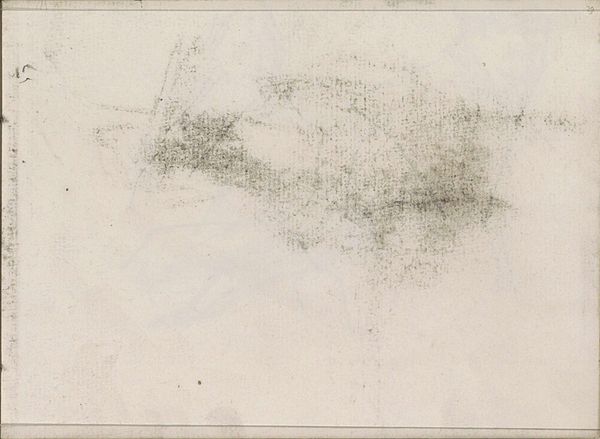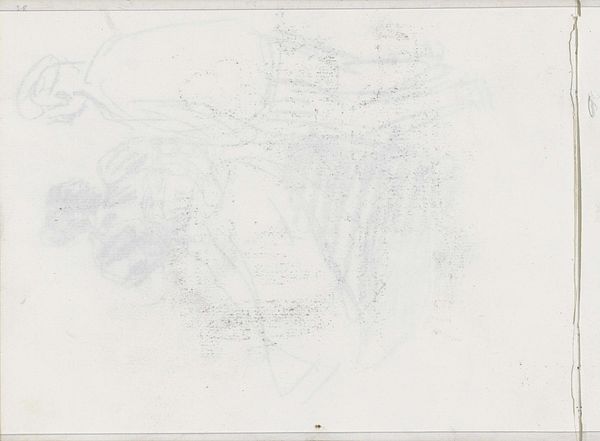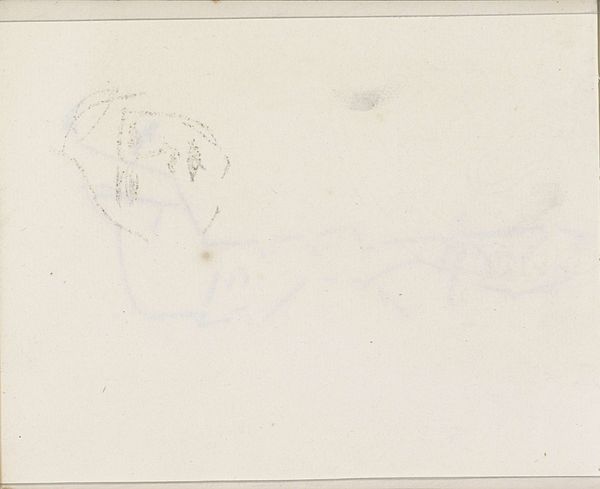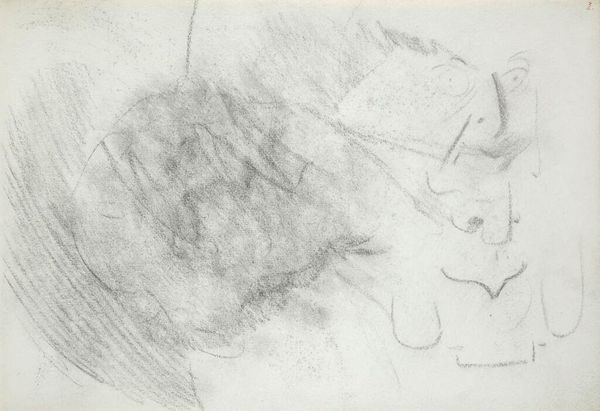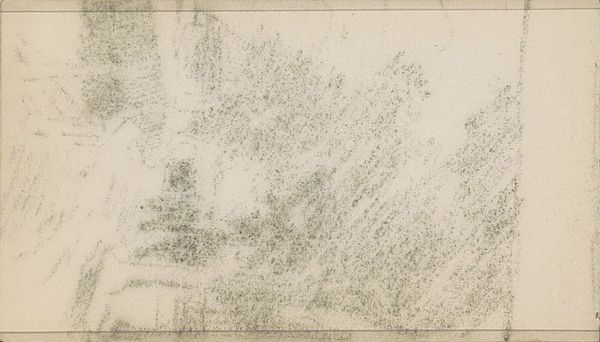
Copyright: Rijks Museum: Open Domain
Curator: This ethereal sketch, titled *Abklatsch van de krijttekening op pagina 42*, created by Isaac Israels sometime between 1886 and 1903, invites contemplation. Editor: There's something incredibly delicate about this work. It's as though we're catching a fleeting moment, almost like a ghost captured on paper. It's both haunting and intimate, this trace of a portrait rendered in pencil. Curator: Indeed. Israels was known for capturing everyday life with a light touch. Examining his role as a Jewish artist also reveals how class anxieties surrounding portraiture impacted him, given this piece and others being sketches only. This "copy of the chalk drawing on page 42," held at the Rijksmuseum, provides insight into Israels' method. As a Jewish artist working in Europe he would face marginalization on different levels, potentially impacting the accessibility and price points of portrait works like this. Editor: You can really sense the rapid, impressionistic approach, can't you? Considering it a reflection of everyday life is intriguing. The faint pencil lines really capture the spirit of Impressionism, in trying to catch a modern glimpse. I’m also wondering how notions of gender might also factor into it if the work in the picture has the impression of an older woman. How does that context illuminate this copy as well? Curator: Thinking about those fleeting impressions that are made permanent… Israels, a product of his social moment, leaves us these documents. Examining the socio-political moment it was made helps to interpret the historical context of that rapid sketch. It makes you wonder about the identity of this sketched woman: How were Jewish women able to live their lives? Why are we looking at what might be one page in Israels' sketchbook? Editor: Placing it in this larger, historically conscious frame definitely enriches my appreciation of it. Looking at the broader conditions surrounding portraiture in the time gives an alternative perspective on what a portrait drawing may have looked like. Curator: Absolutely, by situating the work within a broader, historical context, we expose some truths about our society’s attitude towards Jewish and female bodies. The impact and relevance of these works, I think, becomes heightened over time. Editor: It really invites further study of Israels as well, considering what it may suggest about a subject that would normally go ignored in grand paintings.
Comments
No comments
Be the first to comment and join the conversation on the ultimate creative platform.

